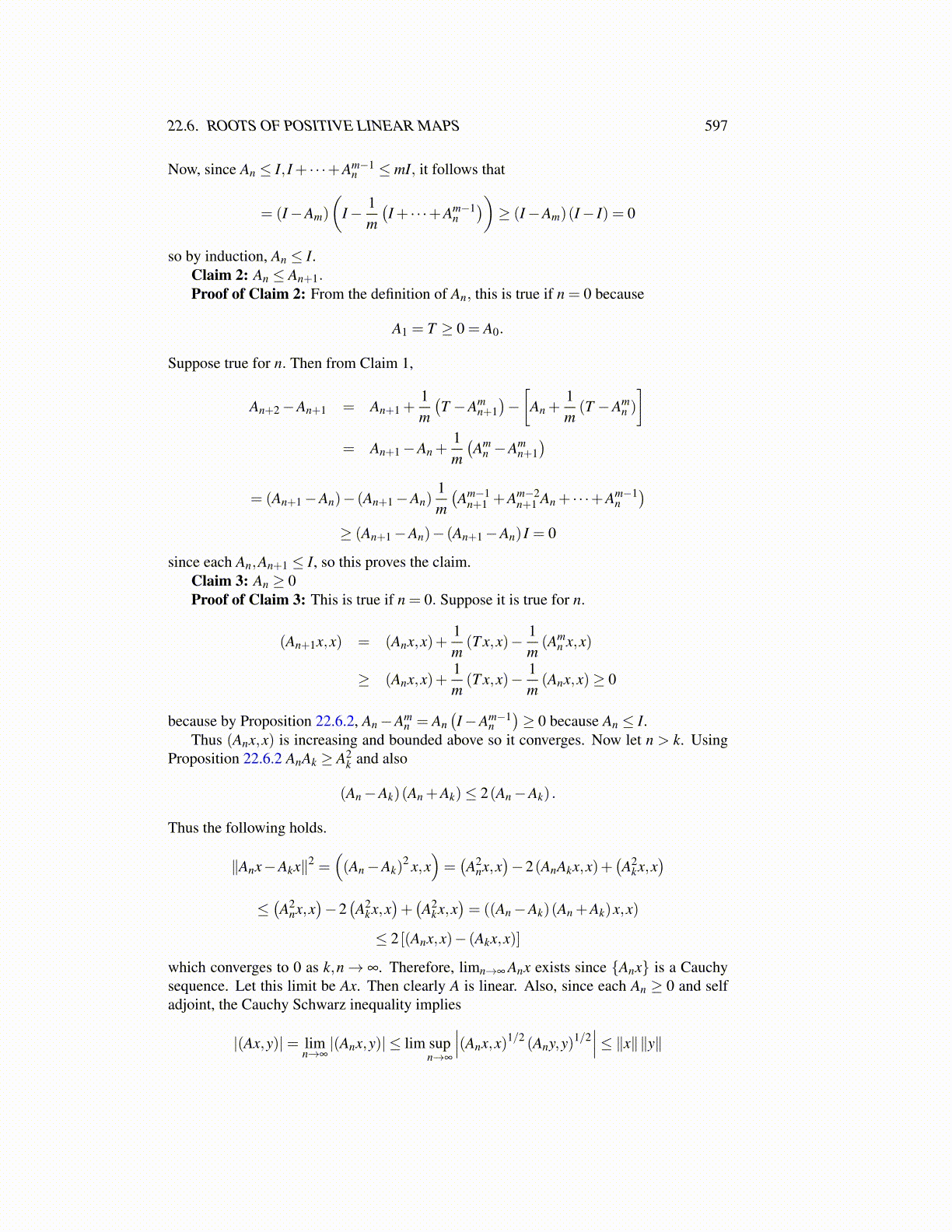
22.6. ROOTS OF POSITIVE LINEAR MAPS 597
Now, since An ≤ I, I + · · ·+Am−1n ≤ mI, it follows that
= (I−Am)
(I− 1
m
(I + · · ·+Am−1
n))≥ (I−Am)(I− I) = 0
so by induction, An ≤ I.Claim 2: An ≤ An+1.Proof of Claim 2: From the definition of An, this is true if n = 0 because
A1 = T ≥ 0 = A0.
Suppose true for n. Then from Claim 1,
An+2−An+1 = An+1 +1m
(T −Am
n+1)−[
An +1m(T −Am
n )
]= An+1−An +
1m
(Am
n −Amn+1)
= (An+1−An)− (An+1−An)1m
(Am−1
n+1 +Am−2n+1 An + · · ·+Am−1
n)
≥ (An+1−An)− (An+1−An) I = 0
since each An,An+1 ≤ I, so this proves the claim.Claim 3: An ≥ 0Proof of Claim 3: This is true if n = 0. Suppose it is true for n.
(An+1x,x) = (Anx,x)+1m(T x,x)− 1
m(Am
n x,x)
≥ (Anx,x)+1m(T x,x)− 1
m(Anx,x)≥ 0
because by Proposition 22.6.2, An−Amn = An
(I−Am−1
n)≥ 0 because An ≤ I.
Thus (Anx,x) is increasing and bounded above so it converges. Now let n > k. UsingProposition 22.6.2 AnAk ≥ A2
k and also
(An−Ak)(An +Ak)≤ 2(An−Ak) .
Thus the following holds.
∥Anx−Akx∥2 =((An−Ak)
2 x,x)=(A2
nx,x)−2(AnAkx,x)+
(A2
kx,x)
≤(A2
nx,x)−2(A2
kx,x)+(A2
kx,x)= ((An−Ak)(An +Ak)x,x)
≤ 2 [(Anx,x)− (Akx,x)]
which converges to 0 as k,n→ ∞. Therefore, limn→∞ Anx exists since {Anx} is a Cauchysequence. Let this limit be Ax. Then clearly A is linear. Also, since each An ≥ 0 and selfadjoint, the Cauchy Schwarz inequality implies
|(Ax,y)|= limn→∞|(Anx,y)| ≤ lim sup
n→∞
∣∣∣(Anx,x)1/2 (Any,y)1/2∣∣∣≤ ∥x∥∥y∥